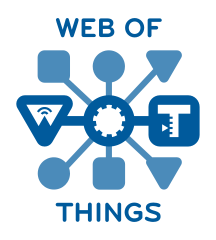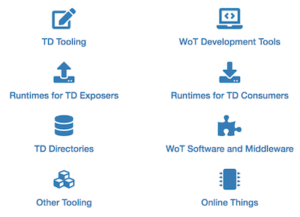W3C Web of Things (WoT) addresses the IoT fragmentation problem
 In traditional Internet of Things (IoT) projects, developers grapple with the complexity of diverse systems and services from different vendors, hindering flexibility and interoperability. Customers want to be able to choose devices from multiple vendors without redesign. The W3C Web of Things (WoT) simplifies IoT application development by offering standardized building blocks. The WoT uses web technology to harmonize access to diverse IoT devices and breaks silo walls. This allows WoT applications to be written on top of a single, portable interaction abstraction.
In traditional Internet of Things (IoT) projects, developers grapple with the complexity of diverse systems and services from different vendors, hindering flexibility and interoperability. Customers want to be able to choose devices from multiple vendors without redesign. The W3C Web of Things (WoT) simplifies IoT application development by offering standardized building blocks. The WoT uses web technology to harmonize access to diverse IoT devices and breaks silo walls. This allows WoT applications to be written on top of a single, portable interaction abstraction.
Many sectors benefit from WoT standards, e.g. smart homes, smart cities, smart industry, smart agriculture, smart healthcare and many more.
New on 5 Dec. 2023: without breaking compatibility with the first release in 2020, W3C published three new WoT Web standards: Architecture 1.1, Thing Description 1.1, and Discovery. These new W3C Recommendations were also revised to improve the usability of the previous release and address new use cases. In addition, two supporting W3C Notes have been updated, the Web of Things (WoT) Binding Templates and the Web of Things (WoT) Scripting API.
Read the testimonials of support from W3C Members, including Siemens, member of the SmartEdge consortium.
Widely adopted and supported
Numerous software packages and open-source projects now support WoT, including tools for Thing Description validation and construction as well as support for Thing runtimes and Thing Description directories supporting discovery.
Market adoption of the WoT is gaining momentum, with notable products such as SayWoT! and Desigo CC from Siemens.
W3C maintains lists of developer resources: libraries, ready-to-use software, services or SDKs. These can be used in different stages of development or for development needs and are grouped in the image below.

